The Arctic Alpine 17 CO cooler in detail
Alpine coolers are always cheap and are sold at prices below ten euros. Active models with fans can be seen as simple replacements for box coolers. However, while Intel has vastly improved the coolers supplied with Alder Lake CPUs between generations, the biggest change with the new Alpine 17 is the added LGA 1700 support. The difference in cooling performance over the Laminar RM1 has thus narrowed considerably.
Just recently Arctic released the Alpine 17 cooler, which is designed for the Intel LGA 1700 platform. This is an option to the more economical Intel processors (with TDP up to 65 W), which come without coolers (tray) or also as a replacement for a broken Laminar cooler. For an analysis of the most widely used RM1 variant (Intel Laminar RM1), see the article Intel Laminar RM1 box cooler test. Why (not) throw it away? For Alpine 17 (CO) it will be the number one opponent.
The Arctic Alpine 17 CO cooler in detail
Compared to the Intel Laminar RM1, the Alpine 17 CO is one fan (20.5 mm) taller. It is 3 mm shorter in the remaining two axes, but still takes up significantly more space overall. Still, at 276 grams, the Arctic cooler is more than 20 % lighter. This is due to the fact that it has an all-aluminum heatsink and the Laminar RM1 has a copper core, which contributes significantly to its weight. However, the radiating surface area of the fins is considerably larger on the Alpine 17 (CO).
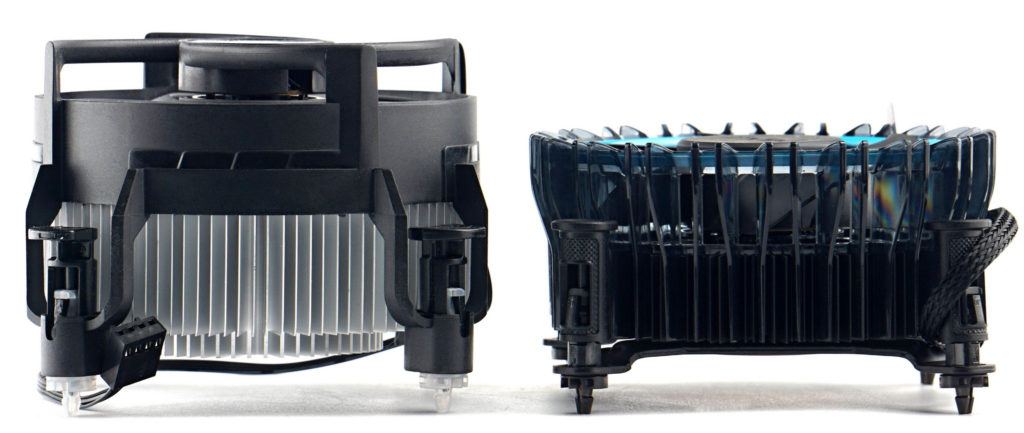
Conceptually, it is a top-flow design. The fan pushes air from the top through the fins onto the PCB of the motherboard. This has the advantage, over tower-like designs, of more intense air movement around the power delivery, which it only helps.
Alpine 17 coolers are available in two variants. We have the more expensive one, with a faster and more durable fan. The Alpine with the CO attribute reaches up to 2700 rpm, which is 700 more than the basic variant (with a white fan and without CO in the designation). In addition to the higher speed, it has more robust ball bearings instead of fluid bearings (Alpine 17), and Arctic talks about it in terms of 24/7 use. This recommendation is backed by a long, 6-year warranty.
The format and shape of the fan is the same for both variants. The rotor is 10 mm wider in diameter than the Laminar RM1 and the 90 mm fan naturally has a larger cross-section. It also consists of five blades, but with significantly more surface area per blade, as the individual blades have a more pronounced curvature.
Although the fan can be conveniently removed (it is only clipped on the heatsink), the frame is tailored exactly to the needs of this cooler. Therefore, you can’t replace it with another, standard fan if necessary. To do that, you’d have to be pretty resourceful, because the fan or rather its bracket also includes push-pins for mounting it to the socket. These are standard, just like the ones you know from older Intel box coolers.
And there are more similarities with Intel coolers. The heatsink is monolithic, made of aluminum, with pre-applied thermal paste, but mainly with long straight fins that fork from the middle. This is to maximize the available radiating area.
The photo below is a comparison of the Alpine 17 (CO) heatsink with the heatsink of the box cooler with the LGA 11xx CPUs. The cross section is identical except for two small things. Namely, the Arctic passive has roughly 14 % more contact area (aluminum core) with the CPU IHS and has a 6.5 mm wider fin span.
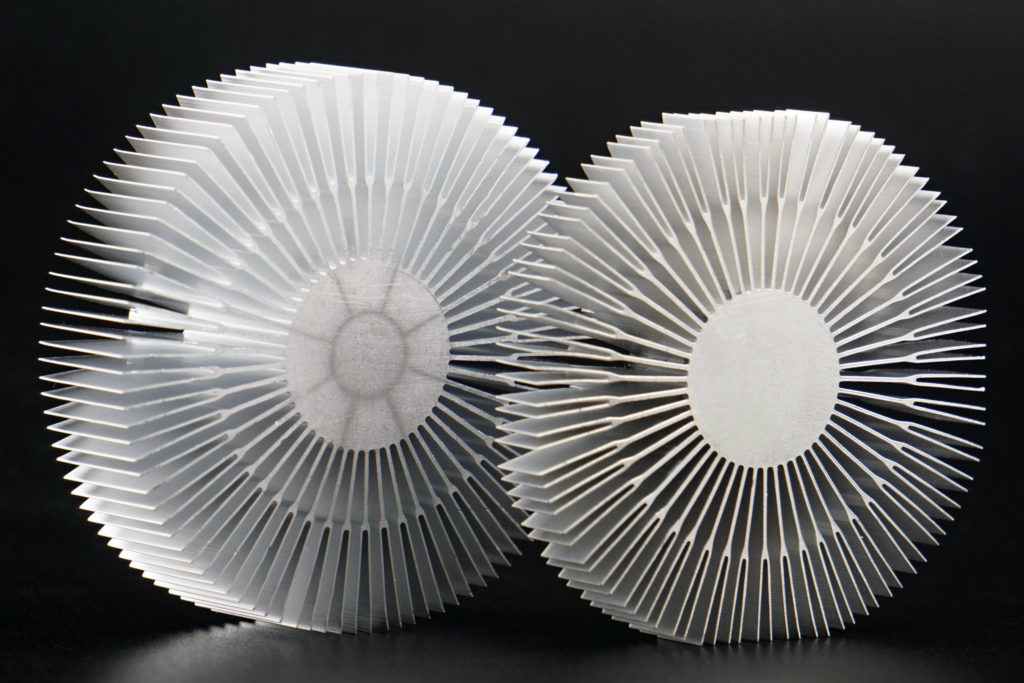
Due to twice the weight and almost twice the height (33 mm), the Alpine 17 passive has a significantly higher thermal capacity than Intel’s aluminum box coolers without a copper core, which are/were supplied (it’s almost relevant to use past tense, as they are on “final sale”) with processors with TDP up to 65 W.
Metodika
The coolers are tested at maximum output and at lower speeds corresponding to fixed noise levels of 45, 42, 39, 36, 33 and 31 dBA. Noise levels are measured with a Reed R8080 noise meter (with a parabolic collar to increase sensitivity) at a distance of 15 centimetres from the sound source (fan).
Measurements are done traditionally in our wind tunnel, with two 500-rpm Noctua NF-S12A PWM fans at the intake and an equal number of these fans at the exhaust. The intake air temperature (21-21.1 °C) is constant, properly controlled throughout the testing. The tests run on an Intel Core i5-12400 with stepping H0 (i.e., a variant with the smaller core, which Core i3s, Pentiums, and Celerons also have). This, without power-limits (average CPU power draw is then around 93 W) and with PL2 limited to the TDP level (65 W). We simulate the load in Cinebench R23, the test motherboard is MSI MAG Z690 Tomahawk WiFi DDR4.
- Contents
- The Arctic Alpine 17 CO cooler in detail
- Results: Higher performance (42+ dBA)
- Results: Lower noise (31–39 dBA)
- Conclusion





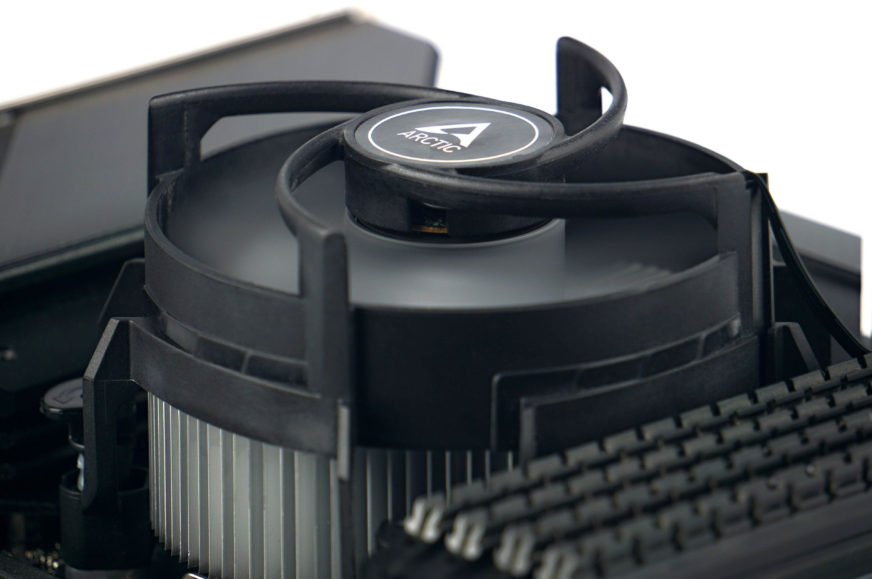
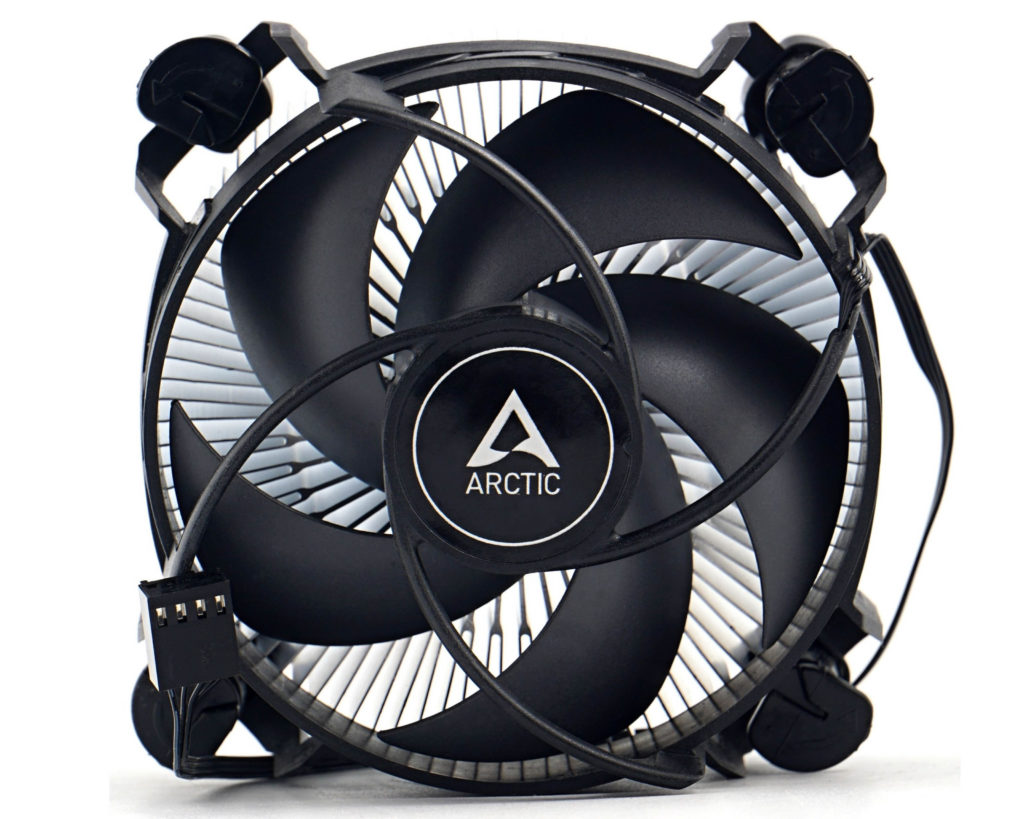
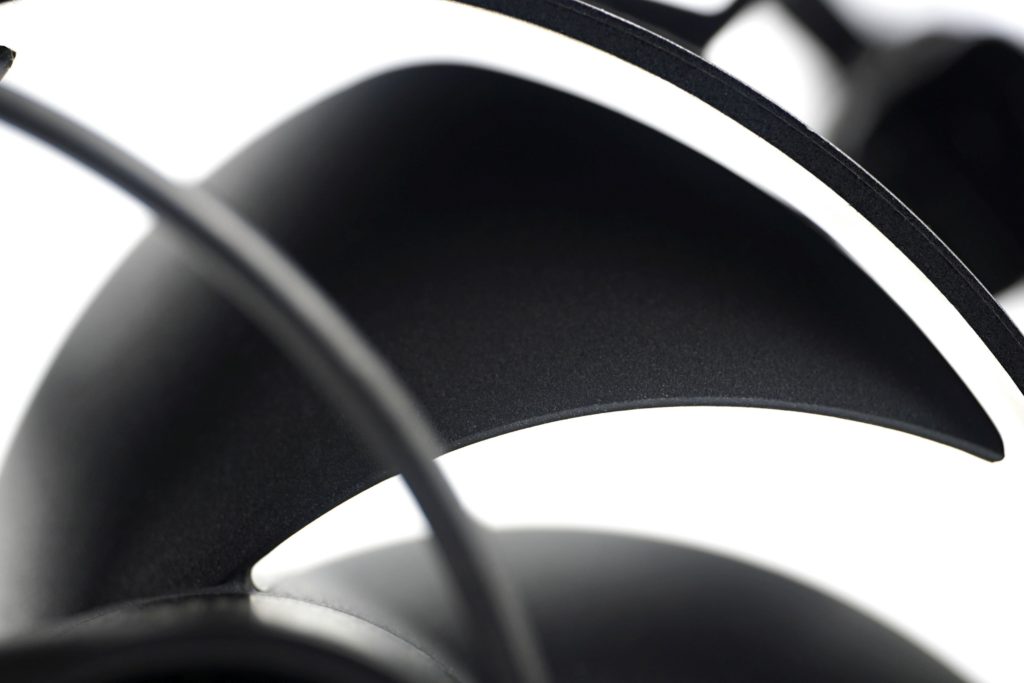
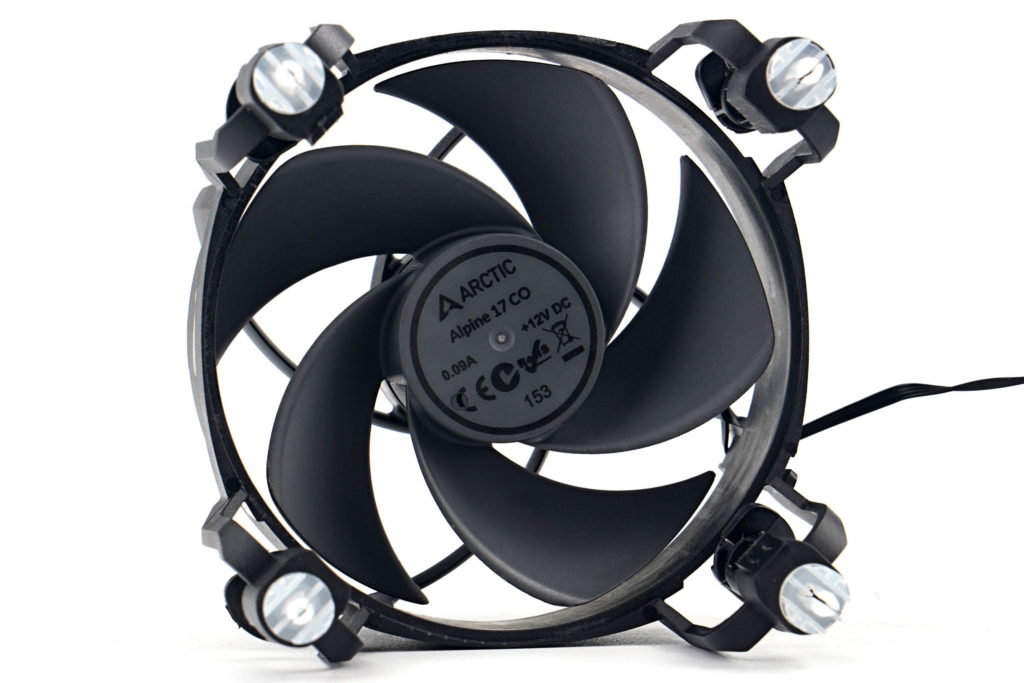
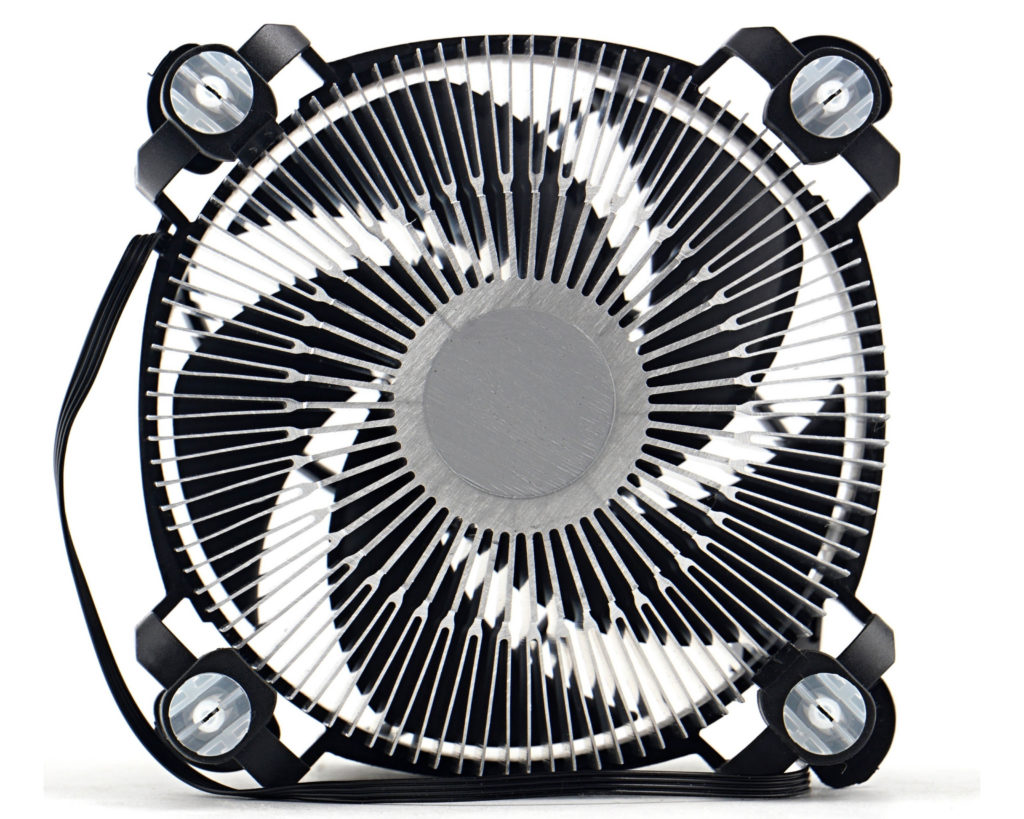
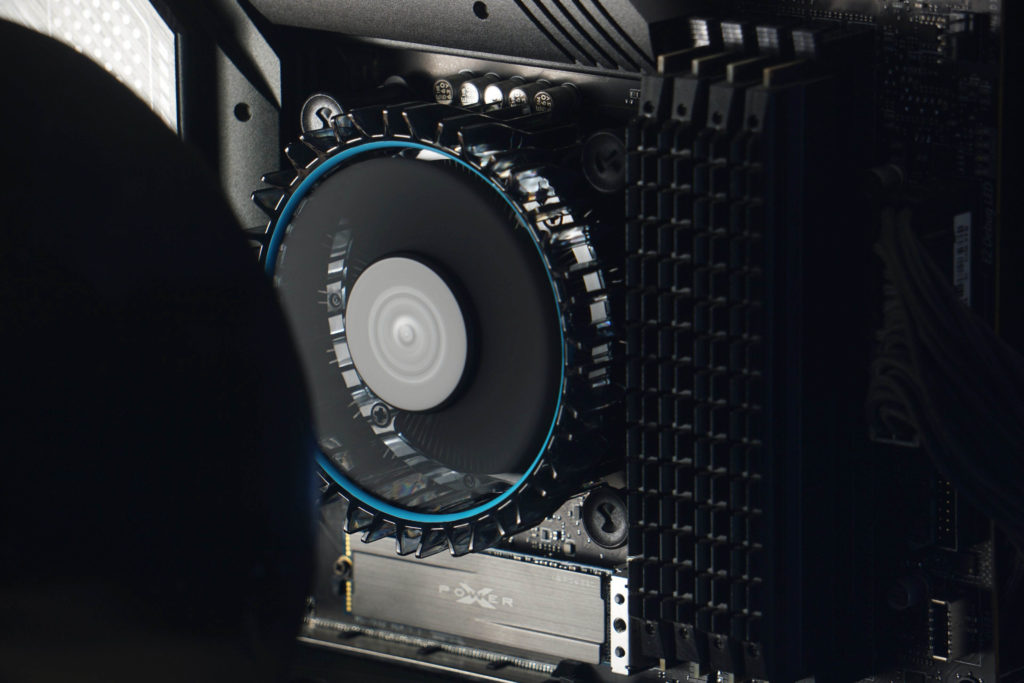






I am searching for a budget cooler, to replace the noisy stock Intel cooler. And after the article read I found that the Alpine 15 CO won’t make difference at noise levels difference (from what it says in the review) can you tell me a budge & simple cpu cooler with a good low noise?
I don’t use the PC hardly, and I only play soft games. No overcloking. It 12400F.
I APPRECIATE any tips, for low budget coolers with low noise levels. I can’t stand the stock Intel fan noise anymore, and I only have this Pc at 2weeks.
Do you have any height restrictions? If not, there is the Spartan 5 (EY3A001, model with two heatpipes). It’s cheap and for Ci5-12400 has sufficient cooling performance even at very low/quiet speeds. But if you need a low-profile cooler that is more effective than the Laminar RM1, it will be more complicated. Especially if it has to be cheap at the same time.
Have you tried to adjust the PWM control curve of the Laminar RM1 with respect to quieter operation? Maybe the control is more aggressive than it could be. According to our findings, the cooling performance of Laminar RM1 on Ci5-12400 is sufficient even at lower speeds, as long as the processor is not operated at maximum performance without power supply limits (at 95 W). With power limitation according to PL/TDP limits (to 65 W) or in gaming load (where the power draw is always to 60 W), Laminar RM1 with lower speed will be sufficient even in a case with average airflow. Unless you are working in an environment with excessive ambient air temperature. 🙂